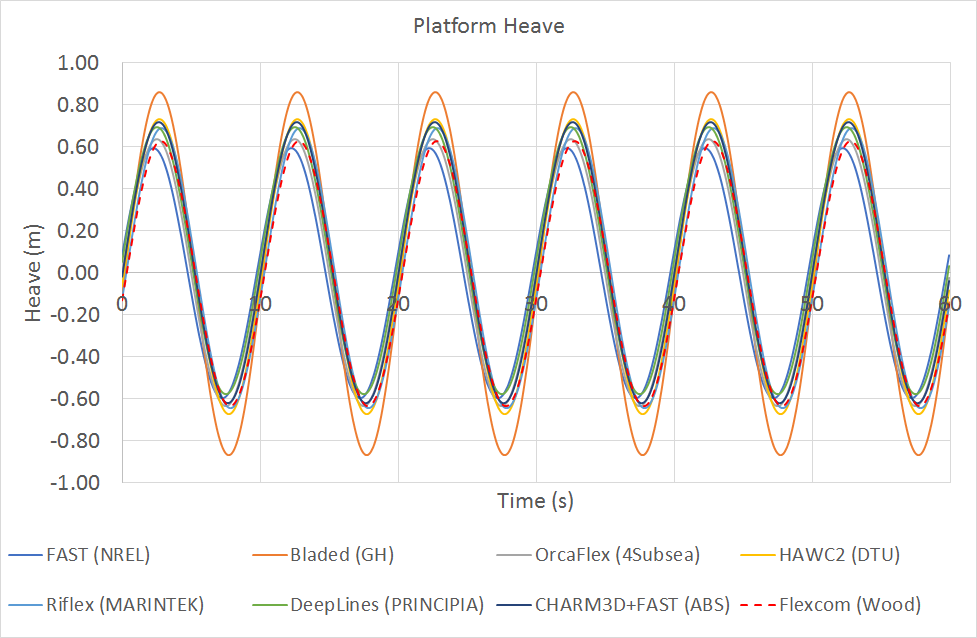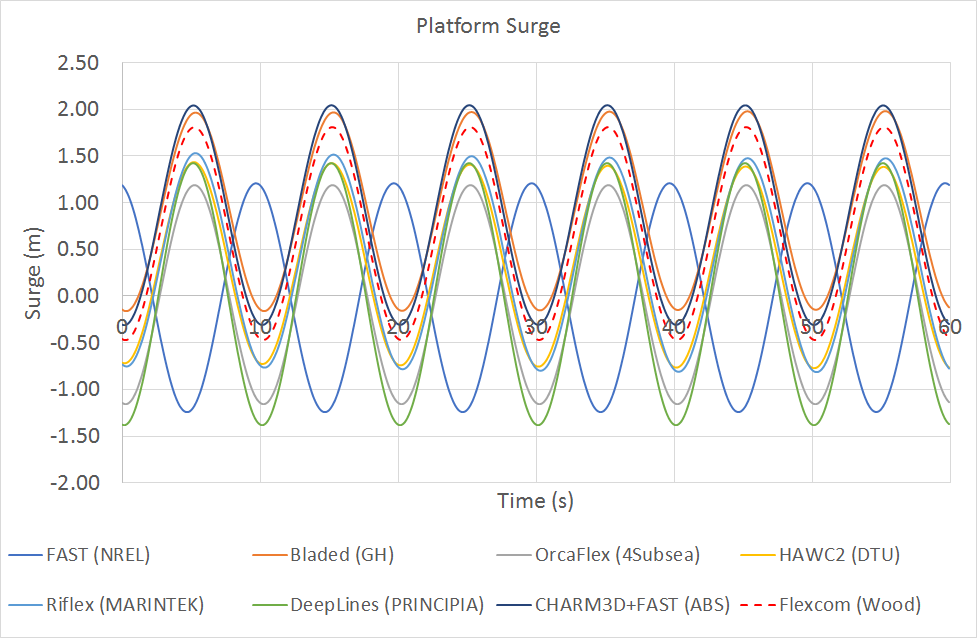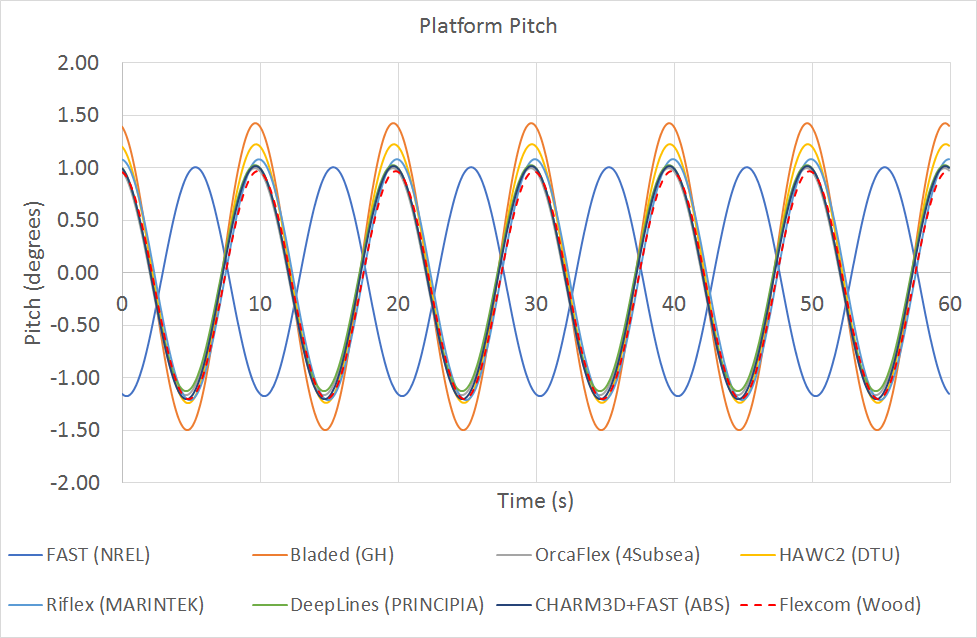Flexcom's heave response shows close agreement with the other software tools, in terms of response amplitude, period and phase. Results from Bladed (GH) show a heave response which is slightly larger than the other software tools.

The surge response shows considerable variation across the different software products, depending on how drift forces are being modelled (if at all). Robertson et al. (2014) note that:
1.Simulations using first-order potential flow-theory and/or Morison’s equation calculated at the undisplaced platform position (without any wave stretching assumption) will oscillate about a zero-mean position.
2.Simulations which incorporate one or more sources of non-linear drift will predict a non-zero mean value for the surge motion. Any of the following can induce non-linear drift...
•Inclusion of second-order terms in the potential-flow theory solution
•Approximation of difference-frequency terms through Newman’s approximation
•Application of a mean-drift force derived from first-order potential-flow theory
•Application of Morison’s equation at the instantaneous platform position
•Integration of Morison’s equation up to the instantaneous wave elevation using a stretching technique such as Wheeler
The Flexcom model in this case computes the viscous drag forces at the instantaneous platform position which leads to a non-zero mean surge position. Results from Charm3D+FAST (ABS) and Bladed (GH) show the largest mean surge offsets, as these account for most of the drift modelling approaches noted above. Results from FAST (NREL) appear out of phase with the other tools, although this discrepancy may be caused by an inconsistency in presentation only.

Flexcom's pitch response shows close agreement with the other software tools, in terms of response amplitude, period and phase. Results from Bladed (GH) show a pitch response which is slightly larger than the other software tools. Results from FAST (NREL) appear out of phase with the other tools, although this discrepancy is most likely caused by an inconsistency in presentation only.

The fairlead tension predicted by Flexcom shows good agreement with the other software tools. In terms of the tension variation as a function of time, Flexcom’s results show a multi-frequency style response. This characteristic is shared with most of the software tools, which typically consider the structural dynamics of the mooring lines in addition to the wave excitation forces. Some tools show a simpler response as these models are using a quasi-static approach for modelling the mooring lines. Robertson et al. (2014) note that “although the mooring loads may differ vastly between these two approaches, the mean values are similar and tend to have no significant effect on the overall dynamic response of the structure”.
